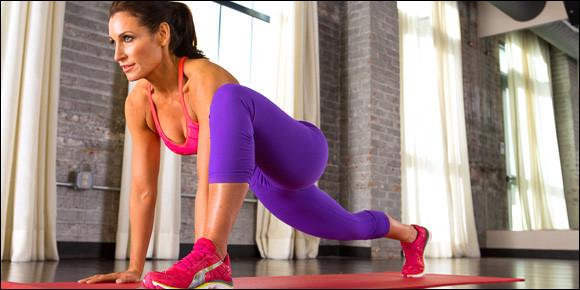To make improvements to your athletic performance and prevent injury, studies have shown that stretching can help. Stretching often takes a back seat to the exercise routines of many. Improving your flexibility can help your joints and give you more full range of motion when moving. Many suffer from the side effects of the loss of mobility in the joints due to aging or conditions such as tendinitis. When you stretch you elongate muscle fibers that are often constricted with regular weight training. Increasing the blood flow through the muscle can also increase your energy levels!
One of the greatest benefits of stretching is that you can do it anywhere or at anytime! There are theories on what is better, as to, pre or post exercise. It is never wise to stretch your muscles without a warm up that involves some sort of movement. This is one of the reasons why in Yoga they begin with Sun Salutations. Gentle, yet dynamic, movements such as this can help you become more flexible for longer static stretches to follow. This is the Yoga version of a good cardiovascular warm up! It is suggested by the Mayo Clinic that you do a light walk, jog or bike ride for at least 10 minutes prior to stretching. If you are going to do intensive exercise that involves sprinting or a track & field type of activity, you should avoid stretching. Stretching before these activities can actually hinder your performance. It is important to focus on stretches that are related to the sport or activity that you are involved in. You want to begin stretching and easing into the stretches slowly and eventually lengthen and stretch the muscle more once you are warmed up.

Stretching should not be seen as time consuming, but as an important part of your exercise routine. It is an excellent way to distress, which is important for balancing your cortisol levels and keeping your immune system strong. Exercise creates an element of stress on our bodies and why taking time to breath and relax deeply into our stretches is equally important to weight loss success involving body fat reduction and the gain of lean muscle. It should never be painful. It should feel like you are reaching your edge with a muscle and if anything it should feel good! If it does not feel good, chances are you have gone past your “edge” with the stretch and are at risk for injury. This should reinforace that you should never force a stretch. Many attempt yoga classes with little background with stretching and are surprised to learn that Yoga is not relaxing at all. Most classes involve movement & poses (known as Asana’s) that require tremendous flexibility and balance. Hot Yoga or Bikram Yoga helps to soften the effects of the stretch and makes the joint more pliable.
To get the most out of the stretching you do, try these suggestions:
- Skip the pre-workout stretch - Your muscles should be warm before you begin your stretching. Do a warmup before a workout that simulates the movements you’ll be doing in order to warm up and prepare your body. Stretch after the workout when your muscles are already warm.
- Focus on the muscles that need the most help - Instead of trying to stretch your whole body after every time you exercise, focus on a key area of the body each time. Spend longer on each stretch and include more stretches for each area. If you are aware of muscles that are tight, then focus on those ones.
- Include one long-duration flexibility session each week - Choose a flexibility class, such as yoga, hot yoga, pilates, or do your own flexibility work for 45-60 minutes at least once a week.
Adding your stretching sessions to your calendar will hold you mentally accountable and maybe you will make it a priority! It's well worth it.


